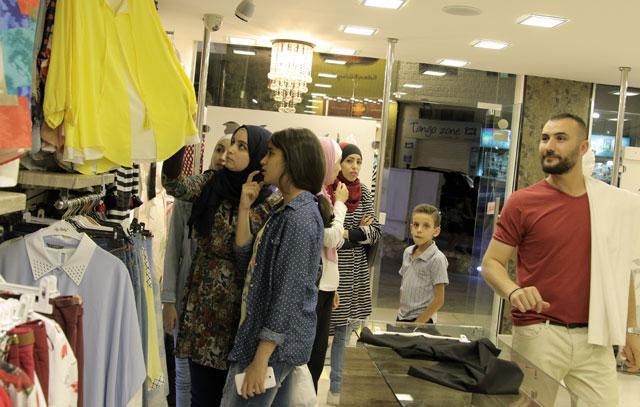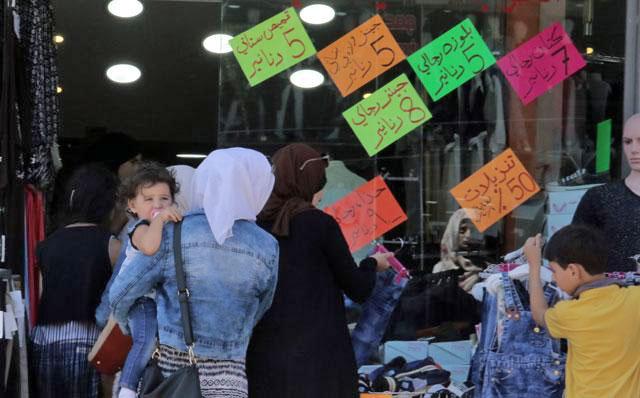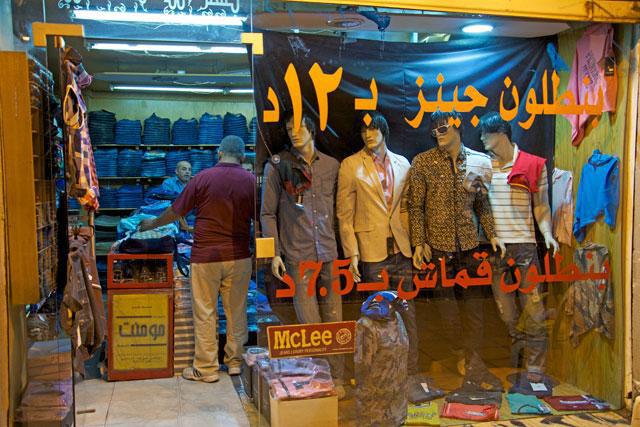You are here
Economic challenges wear down garment sector as Jordanians’ purchasing power wanes
By Suzanna Goussous - Jul 29,2018 - Last updated at Jul 29,2018

Custom duties and taxes are some of the major challenges facing garment traders and retailers, which constitute 57 per cent of the product’s price — the highest in the region (File photo)
AMMAN — The garment sector recorded a 35 per cent decline since January as the demand on clothes and shoes is witnessing its lowest rate yet since three years ago, Garment Traders Association President Munir Dayeh has recently told the Jordan News Agency, Petra.
“Due to the current economic challenges, the clothing sector is suffering from a major drop in purchasing power,” said Ziad Ghaleeth, owner of a garment shop near Al Madina Al Munawwara Street in Amman.
Ghaleeth said the economic situation in the country affected the majority of Jordanians, explaining that households have more commitments and challenges to deal with, which makes it difficult for many families to shop for clothes and shoes at this time.
“Local liquidity is seeing an obvious decline, which explains why many garment shops are now either closing down, not making profit, or are at debt,” he told The Jordan Times.
He added: “I had two employees working with me here at the store; however, when the sector started declining, I could not renew their contracts and asked my son and daughter to help two to three days a week.”
As a parent, he said, he had to cut off expenses at home in order to afford the monthly financial commitments. “We recalculated all the expenses and had to prioritise some over others.”
Apparel stores did not receive many customers in Eid Al Fitr, Ghaleeth said, expecting even lower rates for Eid Al Adha next month.
“The quality is of little importance to the customer nowadays; they care about the price more than the piece’s worth, which indicates there are several issues facing the garment sector,” the store owner added.
Dayeh said the sector “witnessed zero profit”, despite the return of Jordanian expats for the summer, adding that the imports of the sector amounted to JD195 million for the first half of the current year, compared to JD220 million for last year’s first half.
In recent years, he said, the Kingdom’s imports of clothing and shoes have seen a noticeable decline, with around JD280 million in 2015, and then dropping by 25 per cent over the past two years, adding that there was a similar drop in sales.
With Eid Al Adha approaching, garment store owners “have minimal preparations, with little-to-no expectations on a higher demand on clothes and shoes”, Said Abu Lahab, a garment retailer at Jabal Al Hussein said.
“We do not expect high turnout; the whole situation is frustrating… customers are not ready to spend money while they have debts to repay. It is visible to all of us and we know the sector is going through an ‘unlucky’ phase, especially now that the children are going back to school,” he said.
Raed Sabateen, owner of a garment store near Al Quds Street, said Jordanians are “careful about what they prioritise in light of government policies”, adding that the retailers and store owners are now calculating their losses instead of their profits.
“I know how difficult the situation is because even my children were enrolled in private schools a few years ago. Now I had to register them in public schools. It is a circle and all the dots are connected to each other,” Sabateen told The Jordan Times.
Dayeh said the custom duties and taxes are some of the major challenges facing the traders and retailers, which amount to 57 per cent of the product’s price — the highest in the region, Petra reported.
Related Articles
AMMAN — Jordanian imports of shoes and clothes has declined 27 per cent during the first quarter of 2019, compared with the same period last
AMMAN — Garment Traders Association President Munir Dayeh on Tuesday said that the sector has been highly active during the past three days,
AMMAN — The garments, accessories and shoes sector is “relying” on eid and the remaining days of Ramadan to boost their otherwise deteriorat


















